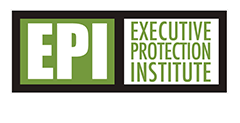~ A Life Remembered
When I was asked to write a memoir for Dr. Cooper, I was both honored and baffled. Honored to be considered worthy of this project. Baffled by the task of distilling such a “larger than life” personality down to a short article. What follows is my collection of thoughts about the good doctor.
To illustrate the veracity of the “larger than life” comment here is a brief bio from a Dr. Cooper article entitled Terrorism and Espionage in the Middle East published by Mellen Press:
Dr. H.H.A. Cooper is president of Nuevevidas International, Inc., a Texas Consulting company specializing in safety and survival issues. He teaches both graduate and undergraduate courses at The University of Texas at Dallas. He directed the National Advisory Committee Task Force on Disorders and Terrorism, 1974-1977, and was the Director of Criminal Law Education and Research Center (CLEAR) and Deputy Director of the Center of Forensic Psychiatry of New York University. Dr. Cooper is the author of many works dealing with terrorism and other manifestations of extraordinary violence.
Continue reading “Dr. HHA Cooper”


